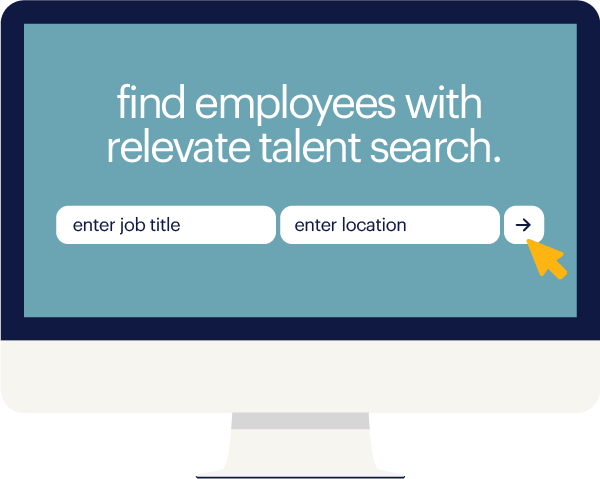On the hunt for an automation or robotics engineer and want to get a sense of the competition out there? Let's first take a look at just how many employers are looking to fill these roles. The latest data from labor-insights provider Burning Glass points to rising demand, with more than 13,000 job postings turning up for automation and robotics engineers in the last year alone.
Considering how essential these roles are in greasing the wheels of technological change — they design robots and deliver innovative processes that make operations faster and more efficient — companies need to fill them fast to remain competitive. That said, how do you find the most qualified applicants in the shortest amount of time?
These steps can help get you on your way to a great hire, fast:
1. review your hiring process for efficiencyReady to kick your recruitment into high gear? Read on for a deeper dive into each of these steps.
1. speed up your hiring process
Outdated or inefficient hiring practices can be a major drag on your operation. Not only do they slow down the search for top talent, long hiring cycles hold back the teams waiting on people to fill their ranks. But when it comes to hiring new engineers, you don't just want anyone — you want the best candidate out there.
If you've been on the hunt for a while now, take a look at this diagram to see if there's room for improvement in your hiring process.
2. develop a competitive compensation package
Automation and robotics engineers are often highly educated, highly specialized and highly sought-after, so they don't come cheap — especially in today's workplace, where automation and efficiency are top of mind for businesses across all industries. So to attract the kind of applicants you want to hire, you'll need to be prepared to make an enticing compensation offer.
Randstad's salary guide can help you arrive at a competitive salary for these roles. But that's not the full story: Competitive salaries vary greatly based on the cost of living in your area and other location-specific factors, so for a more accurate rate using the most up-to-date data available for your market, visit our salary calculator.
3. identify the top skills for automation and robotics engineers
Not every automation or robotics engineer will be a shoo-in for the role you're looking to fill. Sure, the right candidates will have to have experience automating certain types of processes, or designing robotics for applications — but what are your company's specific needs for these roles? Talk with the hiring manager and other engineers on your team to get specific about what this role entails and what kind of background a candidate would need to start adding value to your team from day one.
A good place to start is to think about the skills that are absolutely essential ("must-haves") and those that would be an ideal bonus ("nice-to-haves"). For example:
- Do candidates need expertise in Linux, Java or Python to be viable?
- Do they need to be able to project-manage their way out of a corn maze (or your latest complex initiative)?
- Could you hire someone without advanced human machine interface (HMI) skills or expertise in robotic operating systems (ROS)?
Decide on these early on so you can factor them into your job description and define the right requirements out of the gate. If you need a baseline to begin your brainstorming session, here are the most sought-after skills for automation and robotics engineers, based on the past 12 months of job postings:
automation engineers
Python
Java
Selenium
software development
SQL
Linux
project management
robotics engineers
robotics
C++
Python
software development
machine learning
software engineering
computer vision
4. write an eye-catching job description
A strong job description could be the difference between a flood of qualified applicants and, well, crickets. Here are a few tips to write a job ad that excites people to apply.
don't write like a robot
Sure, job descriptions are transactional. You have an opening; applicants wants jobs. But that doesn't mean they have to read like bills of sale. In fact, just the opposite. The best job descriptions get the necessary information across — like desired skills and job duties — without putting readers to sleep.
So to appeal to potential applicants, stay away from robotic, hard-to-relate-to writing and instead use engaging language and an approachable tone. And while you're at it, focus on the human aspects of the job. After all, you're looking to hire the person building the robot, not the robot itself.
For example, a lot of applicants will want to know whether they'll have the freedom to conduct their own research and experiments (which is probably what got them into the field in the first place). Others will wonder whether they'll have a chance to manage people by advancing through the company to a more senior-level position. Hit on these points in your ad to give applicants something to relate to on a personal and aspirational level.
show how this job is meaningful
No one wants to imagine themselves spending 40-plus hours a week doing meaningless work. To that end, the more you can tie the role to the larger purpose it serves, the more effective you'll be in selling the job.
Meaning might turn up in the role itself — how these engineers positively impact your company's efficiency or product strategy — or in the company's mission, values or social impact programs. It might also turn up in the job's impact on society. For example, robotics and automation are at the center of innovation today, creating many of the products and platforms that make our lives easier. Use that sense of larger purpose to your advantage to add a dash of excitement to the posting.
showcase how these roles contribute to business success and customer satisfaction.
make it easy to skim
Clunky job descriptions written in an unstructured way will confuse applicants and send them looking for other, more reader-friendly listings. For that reason, the best job descriptions are well organized and easy to skim for key information.
A few simple rules can help you write a job description that's easy to digest:
- Stick to short paragraphs and short sentences.
- Use subheadings to break up information (for example, "The Role," "The Impact," "Desired Experience").
- Wherever possible, use bullets for information that easily breaks out into a list. (Just as we did here!)
For more tips on how to write eye-catching job descriptions that don't cause headaches, read our guide to writing highly effective job descriptions.
5. brush up on the latest industry trends
Before you begin any hiring process, you'll want to do some research to get a feel for the trends shaping the outlook for the role in question. Why? To know where the field is headed so you can factor them into your own hiring decisions. (Trust us, these things will come up. You're not just hiring for today, but for the future as well.)
To start, here are a few trends playing out in the engineering industry and — more specifically — the role of automation and robotics engineers.
- More than six percent growth is forecast for automation and robotics engineers by 2029.
- The focus of these roles has shifted significantly, away from scientific research and development — the norm just five years ago — and toward commercial applications.
- Job opportunities for robotics engineers have increased 177 percent during the last five years, but salaries have only gone up seven percent. (Translation: These pros may already seem expensive to hire, but salaries are likely to rise in the coming years, too.)
opportunities for automation and robotics engineers will increase 6.4% by 2029.
6. choose your channels to find candidates
Automation and robotics engineers are in high demand nationwide, and with trained engineers across all disciplines making up less than two percent of the overall U.S. labor force, hiring these experts is only going to get more difficult. And not only are they going to be hard to find, they're certainly not easily interchangeable — making it critical that you make the right hire the first time around.
You may have already posted your open roles on job boards or are working to leverage network referrals from your engineering team. But to diversify your efforts and expand your reach, consider working with a professional staffing firm, too. Staffing agencies not only offer you access to talent pools of prescreened and vetted candidates, but they also have deep expertise in your industry, making your partnership with them one that can strengthen your entire hiring function — and not just provide a quick fix for the role you need to hire now.
Get in touch with our engineering experts at Randstad to learn more about how we can help you find your next great robotics or automation engineer. Interested in learning more about our candidates before talking to someone? Head on over to our Find Employees portal and browse our nationwide pool of top engineering talent today.








